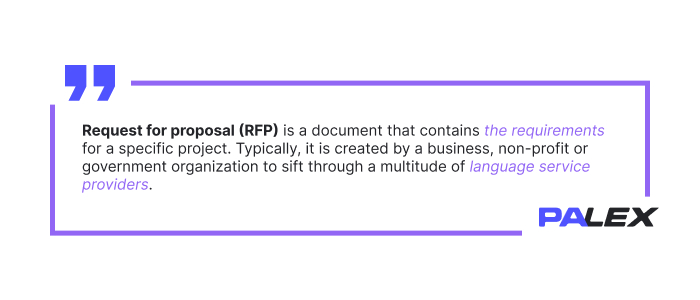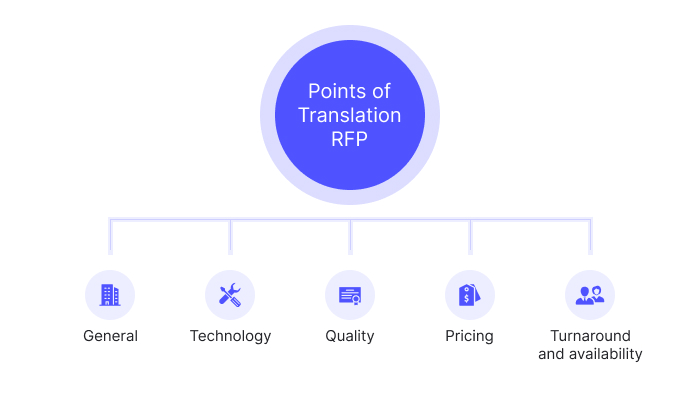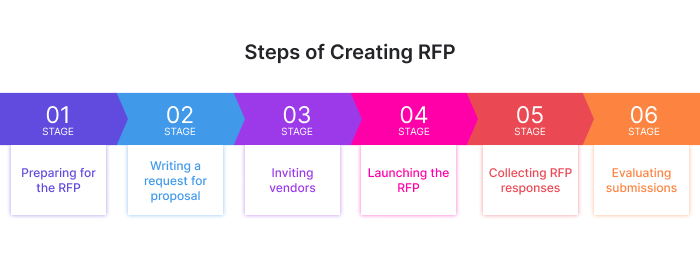So, you’ve decided to contact a language services provider. With tens of thousands of them on the market, a new challenge arises – which one should you work with? If only there was something that would help you choose the right one… but wait, thnere is!
Request for proposal (RFP) is a tool used by business owners to sift through a wide array of translation agencies. The RFP relays your desires to the vendors and helps you determine which one is the most qualified to complete your project.
If you find yourself in need of a guide on RFPs, you’ve come to the right place. This article will explain what an RFP is, what it consists of, how to write one and what best practices to use in your RFP.
An RFP is a document that contains the requirements for a specific project. Typically, it is created by a business, non-profit or government organization to sift through a multitude of language service providers and pick one that ticks all their boxes. With an RFP, you can find a good, mutually beneficial match.

A properly made RFP helps to:
Why do you need an RFP? It is a must when you are starting a complex project, but RFPs can give you more than that. RFPs are used when the organization need to:
Knowing what you need and relaying it to the vendors increases mutual understanding and helps establish a high-performing team with services, quality and pricing beneficial to all partners.
There are 2 key points to be considered in a translation RFP: offering information about your company and asking for information from the vendor.
Generously provide information about your company and your needs. When sharing details about the future project, try to answer the following questions:
These are just a starting point for what you should tell about yourself. Each and every detail contributes to a better proposal from the vendor.

There are a lot of things to consider asking from potential suppliers. For your convenience, we divided the most important points into several groups.
The following is a general recommendation on how to conduct the RFP process from start to finish.

This phase is all about gathering information:
Basically, this is the part where you collect every bit of detail about your project to write it into the RFP. Don’t withhold information – the more details you provide, the better the vendor’s proposal will be.
During this phase you organize the information gathered and questions established in the previous step into a coherent document. Remember to:
Now that everything is ready, you need to invite vendors. Where can you find them? If you want to call for vendors efficiently, try these options:
Vendors and the RFP are ready – time for them to meet each other. After the launch of the RFP, hold a Q&A session to clarify possible questions. Share the Q&A results with all vendors.
It might seem that during this phase there’s not much for you to do, but that’s not so. Treat vendors appropriately: they might come up with questions even after the Q&A. Give vendors enough time to come up with good proposals and prepare your review team for evaluating submissions. Gather and organize responses as they come in.
In this final step, you need to carefully review every submission and determine the best vendor. This is your chance to ask questions and request demos and samples.
Try to be impartial and avoid favoritism when reviewing proposals. Only the vendor that best meets your criteria is a true match. Consider the positive opinions of other buyers, but look closely into the vendor’s services. A vendor can be perfect for someone who gave them a good review, but unfit for your case.
To help you maximize the benefits granted by RFPs, we created a list of best practices used by companies in need of a language service provider.
An RFP is not a finalized contract; it is a tool that helps you evaluate the skill, pricing and services of potential vendors. The contract comes later, when you’ve picked a vendor by accepting one of the bids you attracted with the RFP.
You reap what you sow. When planning and creating an RFP, you want to be sure you’ve done a good job with it. If you miss adding vital elements to the document, you will spend more time later explaining to a vendor what you need. To save time and effort, go the extra mile with your RFP.
Share as much information with the potential vendors as possible. The goal of an RFP is to compare vendors – so make it easier for everyone. Be specific and provide background. Describe your project in detail, list all the requirements and include guidelines on how you would like to receive the information about their services and pricing. If you provide enough information about the project to the vendors, you will receive useful, thoughtfully prepared proposals.
Don’t let excitement get the better of you upon receiving a well-written, perfect proposal. The proposals are often written to showcase the best side of the vendor’s skills. Check the claims in every proposal: request references and demos and run pilots.
If used properly, word of mouth is a great way to assess a potential language service provider. Satisfied customers will gladly share their experience with a certain vendor, giving you an understanding of how the work process will go with this LSP and what perils you can avoid. Consulting with companies that specialize in the same field is a good practice when picking the best vendor. They might even recommend you one.
Even if you already have an established vision for your project and stated a specific way you expect to receive proposals, don’t frown upon responses that don’t follow your expectations to the letter. Some vendors might think outside the box and surprise you, proposing fresh solutions that might be useful to you.
All and all, a translation RFP is a good tool for finding a new vendor or strengthening the team you already have. It might be challenging to compose, but it is most certainly worth it.
Then again, if you are in need of a new partner and you don’t have the time to do an RFP, you might consider contacting the Palex team for a free quote. Our team consists of language and subject matter experts from all over the world, working with 80+ languages and providing high-quality services for major companies in medical, pharma, life sciences and other fields.





